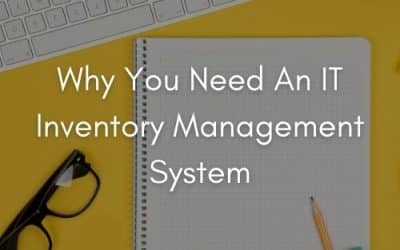To keep up with rapidly developing market conditions, businesses must adapt to cutting-edge technology to stay on top of the game. However, with the numerous IT assets a company needs for every employee, using IT asset tracking software becomes a necessity for businesses.
From laptops to company-issued smartphones, the number of IT assets required by employees can rise exponentially with company size. Despite their common use, IT assets, after all, remain some of the most valuable assets in a company. The heavy price tags associated with each computer, mobile device, or keyboard can result in a gigantic sum when a business evaluates its total investment in IT assets.
IT asset management software ensures all of the IT assets a company owns are kept track of. This includes recording their status, condition, and possession in real-time. Using IT asset tracking software might sound very technical but it’s really very simple.
Here’s a step-by-step guide on how to use IT asset tracking software. Along the way, you will also learn all you can do with itemit’s software solution and why it’s the most user-friendly option on the market.
Using itemit’s IT Asset Tracking Software
1. Tagging and Tracking
After you’ve signed up for itemit’s IT asset management solution, the first step is to tag your IT assets so you can start tracking them. You can either choose small vinyl QR code tags for compact devices or larger metal tags for larger hardware. For more expensive IT software, you can use an RFID tag. Tagging is an optional part of the system but the benefits of tagging your assets are huge.
Once you’ve tagged a device, all you need to do is scan it with the itemit app. This will enable you to allocate a name, location, image, and other details about the IT asset. This short and simple procedure adds the IT asset to a proper asset register.
2. Assign IT Assets to Staff
IT asset tracking software lets you assign each and every device to a user or employee. This makes sure all of the company’s IT assets are being utilised and gives employees a sense of responsibility to keep the IT assets assigned to them well and safe.
Being able to assign different devices to each employee lets you know immediately about which employee has what. This way you can make sure each employee is properly equipped with the devices they need to perform productively and that they don’t request replacement devices unnecessarily when they have already been issued with that kit
To assign an asset to a user, all you have to do is open the item profile on itemit’s web portal and click on the “Assign to a user” button. Next, you can simply assign the asset to an itemit user or create a new contact if you want to assign it to somebody not already on the system.
3. Tracking Asset Location and Condition
With a versatile IT asset tracking software like itemit, you can easily know where a particular device is according to the location it was last scanned at. All the relevant details such as the device condition, who has it, and maintenance information can be accessed from one place for all your IT assets.
4. Reporting and Managing Hardware Issues
Any issues relating to IT assets can be reported through the itemit app or web portal. To report an issue, go to an asset profile by scanning its tag. On the profile, press the “Raise Issue” button.
Then you can write a description for the issue, set a priority level and even add images to show what the issue is. Whenever an issue is reported, itemit account administrators are alerted of the issue. Once an issue has been reported, users can view the status of the asset to know whether the issue has been resolved or not.
5. Booking Equipment in Advance
Booking IT assets and taking devices home for temporary use can be a nightmare if there is no sound IT asset management software in place. With itemit, employees can book items in advance so that they can easily use them or take them out of the workplace for the time they’ve booked. This enhances workplace productivity and enables employees to plan ahead if a particular IT asset they need is already booked.
Not just that, the check-in and check-out feature keeps an accurate record of IT assets going out of the workplace. This reduces the risk of IT asset loss to the bare minimum. To book or check out an asset, all you have to do is open the item profile in the app or web portal and press the respective button.
Why itemit?
Out of all the IT asset tracking software available on the market, itemit is by far the simplest to use with an amazing user-friendly interface. itemit makes asset tracking smooth with its seamless app and web portal integrations with more than 2000 apps.
Not only that, there’s a wide range of features you can take advantage of. If you opt for itemit, IT asset tracking is not the only thing you can do. You’re also free to use the software solution for fixed asset management or tools & equipment tracking.
Start your 14-day free trial by filling in the form below to find out more about how itemit helps you track IT assets. If you’ve got any special questions, please feel free to contact us at team@itemit.com.
IT Asset Tracking Software
Choose a better way to track your assets
Start your free 14-day trial now
Instant access. No credit card details required.
Related articles
Why You Need An IT Inventory Management System
You’ll be facing a lot of common challenges related to tracking your assets. An IT inventory management system will give you more clarity and control.
How Using A Computer Asset Management System Saves You Money
A computer asset management system will save you money by giving you more control over your assets. Save money by saving time and by using helpful features.
Why Is IT Inventory Management Important?
IT inventory management allows you to be adaptable to any changes in your business. It also saves you time and money and speeds up existing operations.




